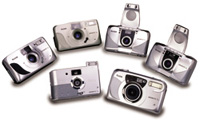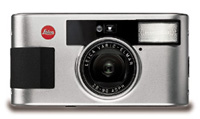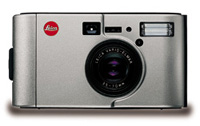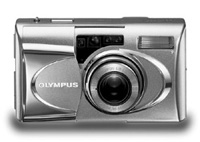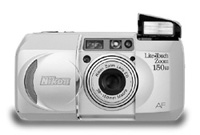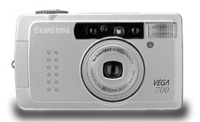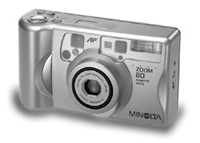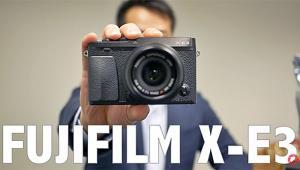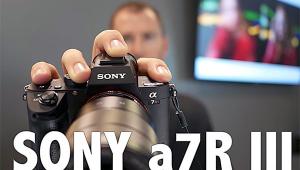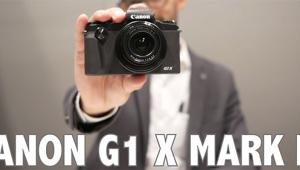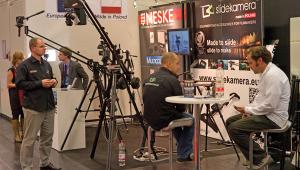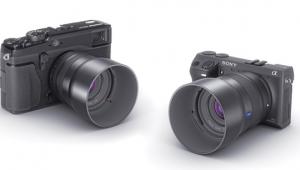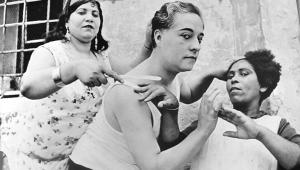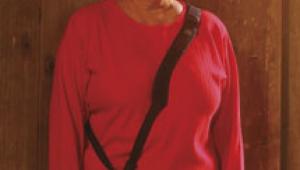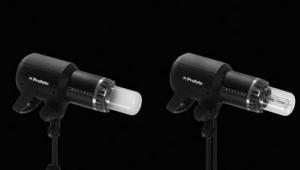Compact 35mm And APS Format Cameras
Although digital equipment received most of the attention at the photokina show, over 80 percent of North American households still own and use at least one conventional camera. Granted, the demand for new film-based lens/shutter models is declining, but these compact cameras are certainly continuing to sell. That's because some consumers find digital cameras too expensive, too large, or too complicated. Consequently, most of the latest 35mm and Advanced Photo System cameras are very slim and lightweight, simple to use, and surprisingly affordable. Most new models include lenses with aspherical elements and many also feature a metal exterior for greater visual and tactile appeal. |
|||
Unless otherwise stated, all of the following models are Program cameras with built-in multimode flash, DX code reader for automatic film speed setting, and motorized film advance. Although I'll discuss significant points about each new model, do visit the manufacturers' web sites for more information on any camera of interest. The full specification lists include a great deal of additional data about camera capabilities, maximum apertures of the lenses, as well as size and weight. Advanced Photo System
(24mm) Models |
|||
Premium Grade 35mm Models |
|||
Affordable Yashica Model.
Kyocera makes some expensive Contax cameras, but also offers more affordable--and
very small/lightweight--models under the Yashica logo. The new Yashica
T Zoom, for example, will sell for about $199, but offers some significant
features we'd expect in a Contax model. That starts with a rugged
metal front cover and a Carl Zeiss T* Vario Tessar 28-70mm zoom lens with
two aspherical elements. This is a well equipped camera, with features
such as an eyepiece diopter correction dial and 1.5 EV range exposure
compensation control plus five point passive AF system for quick shooting
with off-center subjects. Although it exhibits fairly standard styling,
the Yashica T Zoom is produced in an attractive charcoal color that provides
a distinctive look. |
|||
Nikon Lite-Touch
"Flagship." Renowned for making lenses of superb quality,
Nikon includes high-grade optics in some of their 35mm compact cameras.
Their latest premium-grade model is the Lite-Touch Zoom 150 ED boasting
a 38-150mm lens with Extra-low Dispersion (ED) glass for high image quality
at long focal lengths, plus two aspherical lens elements for great quality
at shorter lens settings. Though not made of metal, the clamshell-style
body is certainly distinctive with a titanium-colored finish and lots
of shiny gold trim. In spite of the long lens, this slim camera is said
to be "the world's smallest, lightest (7 oz) model with 4x
zoom and sliding lens cover." The Nikon Lite-Touch Zoom 150 ED is
well equipped, too, with features such as a wide area passive AF system,
panorama frame mask, and diopter correction dial. (List price: $299.) |
|||
Other 35mm Models
|
|||
More conventional features
include an eyepiece diopter correction dial, and a remote controller unit.
The 28-100mm zoom lens will appeal to those who want true wide angle effects,
and it features two aspherical elements. All of the many features and
advanced technology have been packaged into an elegant, champagne-colored
clamshell body that is compact and slim for maximum portability. (Price
not yet available.) |
- Log in or register to post comments

